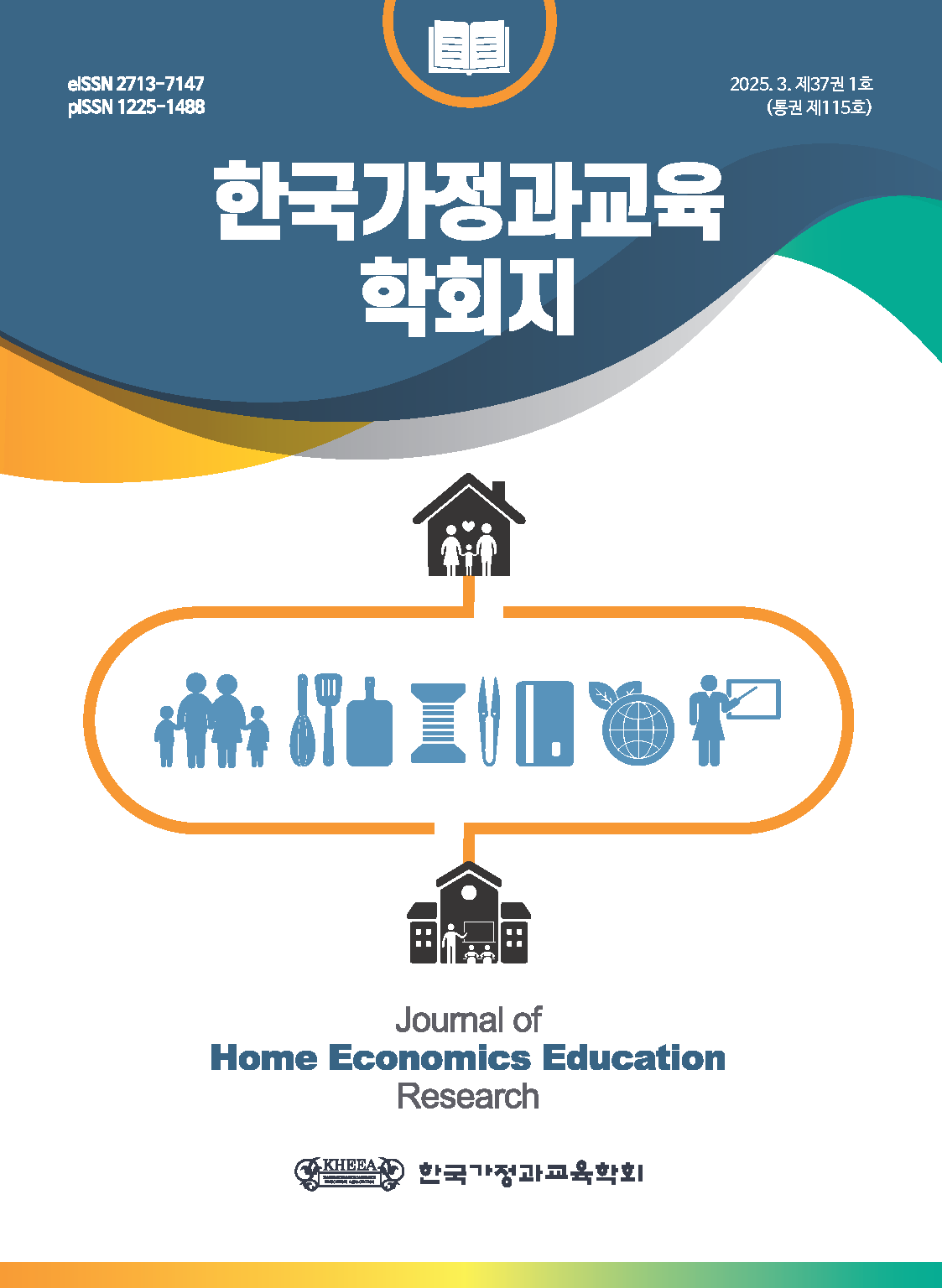청소년 소비자의 금융이해력 결정요인에 관한 연구: 의사결정나무 분석 적용
A Study on the Determinants of Financial Literacy among Adolescent Consumers: Application of Decision Tree Analysis
- 한국가정과교육학회
- 한국가정과교육학회지
- 제37권 제1호
-
2025.03155 - 172 (18 pages)
-
DOI : 10.19031/jkheea.2025.3.37.1.155
- 66

본 연구는 중학생과 고등학생 소비자의 금융이해력을 비교하고, 두 집단 간 금융이해력 결정요인의 차이가 나타나는지를 실증적으로 검증하는 데 목적이 있다. 선행연구에서는 학교급에 따라 금융이해력의 수준과 결정요인이 다를 수 있음이 시사되었으나, 이를 의사결정나무 분석을 활용하여 분석한 연구는 제한적이었다. 이에 본 연구에서는 의사결정나무 분석을 활용하여 중학생과 고등학생 각 집단의 금융이해력에 영향을 미치는 변수를 도출하고 분류규칙을 시각적으로 제시하였다. 또한, 데이터 불균형 문제를 해결하기 위해 SMOTE 및 ADASYN 기법을 적용하였으며, 모델 성능을 평가하기 위해 정확도, 민감도, 특이도, 정밀도, AUC값을 비교 분석하였다. 분석 결과 금융정보 탐색여부는 중학생과 고등학생 모두에게 가장 핵심적인 금융이해력 결정요인으로 나타났다. 각 집단의 차이를 살펴보았을 때, 중학생의 경우 금융이해력에 영향을 미치는 주요 요인으로 학업성취도, 체크카드 사용 여부, 본인 명의의 금융상품에 대한 부모의 대리 가입 개수가 주요한 요인이었고, 고등학생의 경우 보호자의 주식 및 투자 관련 교육, 용돈 사용에 대한 교육, 용돈 관리에 대한 교육이 중요한 영향을 미쳤다. 이를 바탕으로 청소년 금융이해력 향상을 위해서는 금융정보 탐색 활성화, 체험형 금융교육 확대, 맞춤형 교육 전략 마련이 필요하다는 점을 알 수 있다. 이러한 본 연구의 결과는 향후 청소년 금융교육 정책 수립 및 프로그램 개발에 유용한 기초자료로 활용될 수 있을 것이다.
This study aims to compare the financial literacy of middle and high school students and empirically examine whether there are differences in the determinants of financial literacy between the two groups. While previous studies have suggested that the level and determinants of financial literacy may vary depending on school level, few have employed decision tree analysis to investigate these differences. Therefore, this study applies decision tree analysis to identify key variables influencing financial literacy among middle and high school students, and visually presents the classification rules derived from the analysis. To address class imbalance issues, SMOTE and ADASYN techniques were applied, and model performance was evaluated using accuracy, sensitivity, specificity, precision and AUC values. The analysis revealed that financial information search behavior was the most critical determinant of financial literacy for both middle and high school students. However, the key influencing factors differed between the groups: for middle school students, academic performance, use of check cards, and the number of financial products registered under their names by parents were significant; for high school students, parental education on stocks and investments, guidance on allowance usage, and financial management education played more prominent roles. Based on these findings, it is evident that enhancing financial literacy among adolescents requires promoting financial information-seeking behaviors, expanding experiential financial education, and developing tailored educational strategies. The results of this study are expected to serve as a useful foundation for future youth financial education policies and program development.
Ⅰ. 서론
Ⅱ. 이론적 배경
Ⅲ. 연구방법
Ⅳ. 연구결과
Ⅴ. 결론 및 제언
(0)
(0)